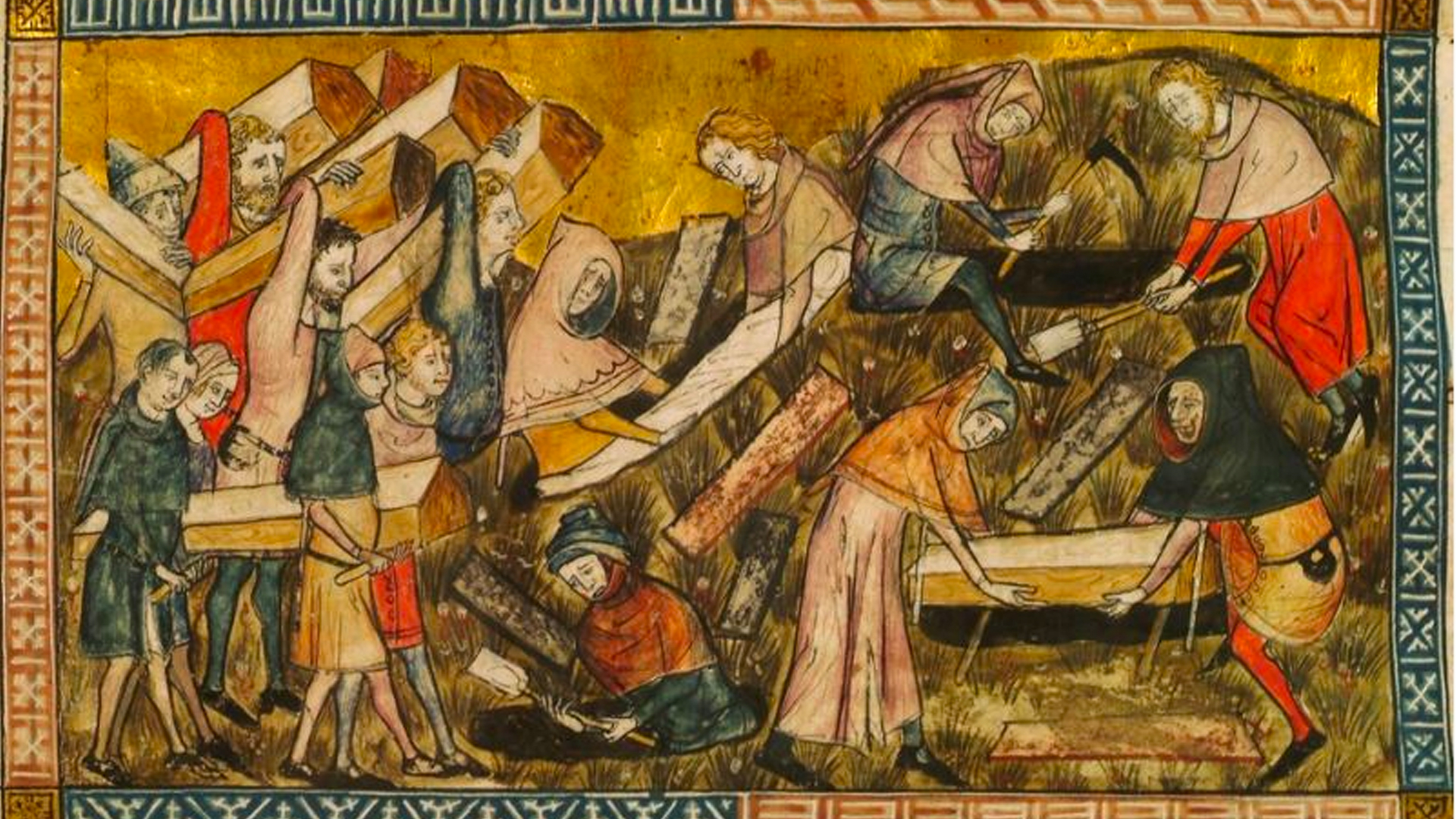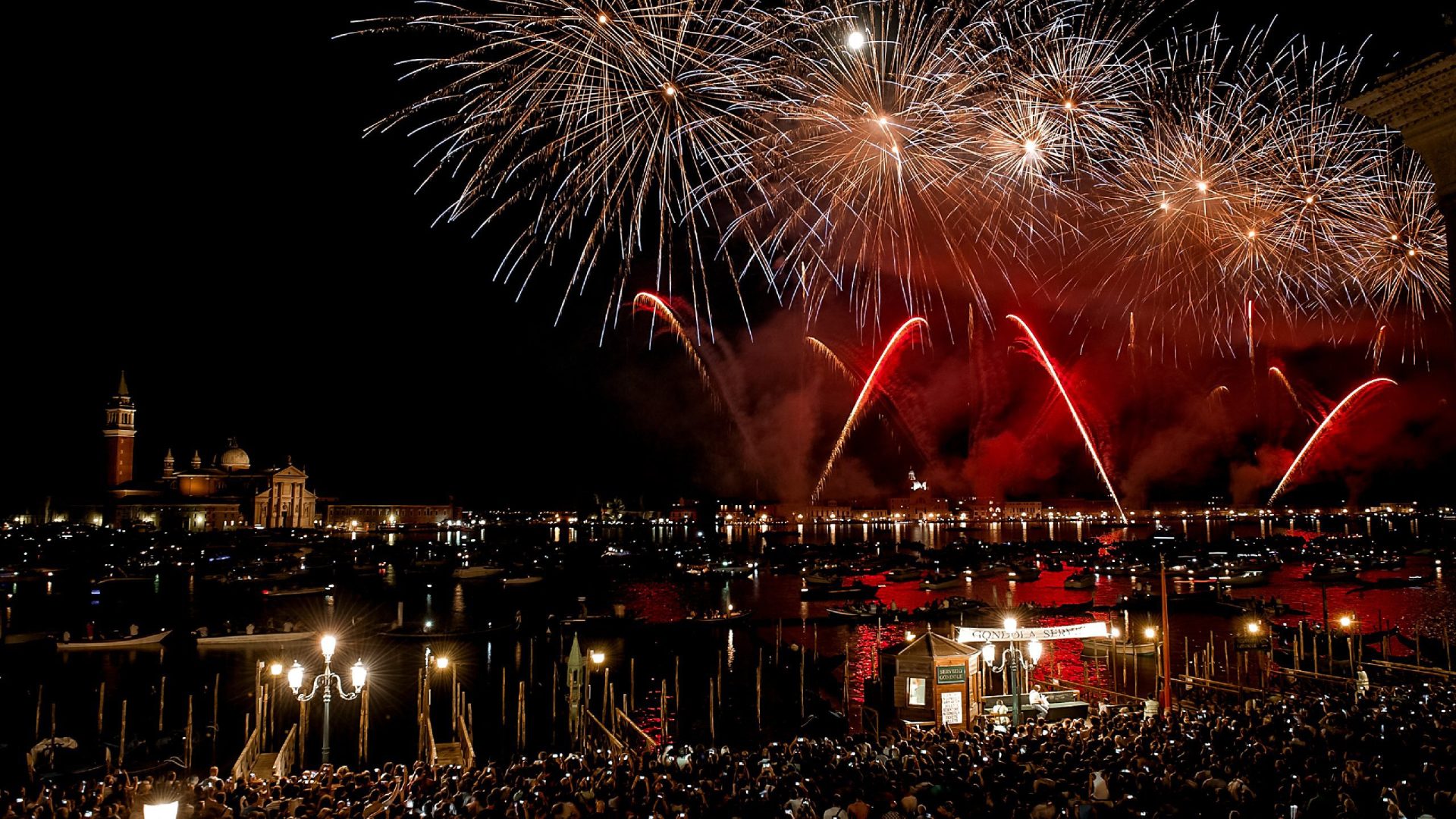On the third Saturday in July, the people of Venice take to their boats in the canals to celebrate La Festa Del Redentore. The nearly five-centuries-old feast commemorates the end of a plague that ravaged the city, but the modern incarnation is a drink-filled party celebrating life.
The Plague Years

The Black Death arrived in Italy in 1575 sweeping through Venice just in time to cancel the Carnevale celebrations. Shops were closed. Gatherings were prohibited. The wealthy aristocrats fled from the city, further spreading the disease.
The outbreak was at the time, one of the worst in over a century. When the plague finally came to an end, more than a third of the city's population had died, claiming tens of thousands of lives. Among the dead was the artist known as Titian, a master painter.
At the onset, the Doge Alvise I Mocenigo made a promise to build a church should the plague end. As the plague subsided, plans were drawn up for the promised church by the famous architect Andrea Palladio. Palladio was known for designing palaces and villas at the time, and today many of his works are UNESCO World Heritage Sites.
The church's first brick for Chiesa del Santissimo Redentore, commonly known as Il Redentore, was laid in 1577. It sat in a prominent position along Canale della Giudecca.
Although the church was not completed until 1592, a temporary structure was posted to use right away and from the moment the foundation was laid, it was used in the ceremony of Festa del Redentore.
In the 16th century, the feast was more of a religious ceremony; it established many of the traditions in place today. Since the new church was on the Island of Giudecca across the wide canal, it was not easily accessible. For the festival, a temporary bridge was constructed using barges to span the canal. The Doge of Venice was able to lead a procession across the canal to hold a mass at the church.
The feast remained a religious event for many years, but over time, evolved into a more secular celebration reminiscent of the city's other big festivals.
Contemporary Festivals

Today, a temporary pontoon bridge is built across the canal to accommodate the festival. The bridge is known as the Ponte Votivo and replicates the bridges once made with "chiatta," the traditional style boats.
The Ponte Votivo spans the canal from Fondamenta delle Zattere, a promenade on the south side of the island, and connects to the island of Giudecca. The bridge is over a thousand feet long and must accommodate tens of thousands of visitors. The official start of the festival begins with a blessing at the bridge.
At sunset, decorated boats fill the canal. Aboard the boats, Venetians drink and eat their feasts including fish, duck, and pasta dishes. The party leads up to the main event of Saturday evening, a midnight fireworks show. The display can last as long as an hour reigning over St. Mark's Basilica and the canal separating the islands.
The modern incarnation of the festival also includes a lot of drinking on Saturday. On Sunday, religious ceremonies are held. A large mass is held in San Marco Square. After the mass, a regatta is held. The Regata del Redentore is a series of boat races held in the canal, including a children's heat and two-oar Gondolas. The brightly painted boats feature standing oarsmen and serve as a popular attraction for locals and tourists.
Foods of the Feast

The streets of Venice fill with food stalls for the festival. These include typical street foods like sausages and grilled meats like pork ribs, as well as melon wrapped in prosciutto and fried zucchini flowers, fior di zucca.
A common appetizer at the festival is Bovoletti, small wild snails. The snails grow locally along the shoreline living in marshes and forests and are harvested in warmer months, the snails are boiled and served with large amounts of garlic, parsley, and oil.
The holiday is also one where people eat a large meal, often on their boats floating in the lagoon. While waiting for the fireworks, families set out in their boats on the lagoon eating the traditional dishes. Pasta fagioli, a bean and pasta soup that usually is served during Venetian winters often starts the meal.
Also frequently eaten at the festival is a traditional Venetian fish dish known as sardi saor. In the Venetian dialect, the term means flavor or savory and is a traditional preparation for fish like sardines and soles. The sauce is made with onions, white wine, vinegar, pine nuts, and raisins, and historically was also a useful way of preserving fish before the era of refrigeration.
Biogoli in Salsa is a traditional pasta served in Venice and Lombardy that often ends up served at the festival. The thick, whole wheat vermicelli is cooked in a sauce made from onions and anchovies.
Ducks are a big part of traditional Venetian cuisine. They were a common addition to farms in the region, and duck eggs are used to make Biogoli pasta. But ducks also make a delicious festival dish–stuffed, roasted duck. Anara col pien are filled with sausage, parmigiana, and duck organ meats like hearts and livers and then roasted.
Like most Venetian festivals, the Festa Del Redentore attracts plenty of tourists, and the city is filled with excitement and energy.
Ian MacAllen
Ian MacAllen is America Domani's Senior Correspondent and the author of Red Sauce: How Italian Food Became American. He is a writer, editor, and graphic designer living in Brooklyn. Connect with him at IanMacAllen.com or on Twitter @IanMacAllen.

